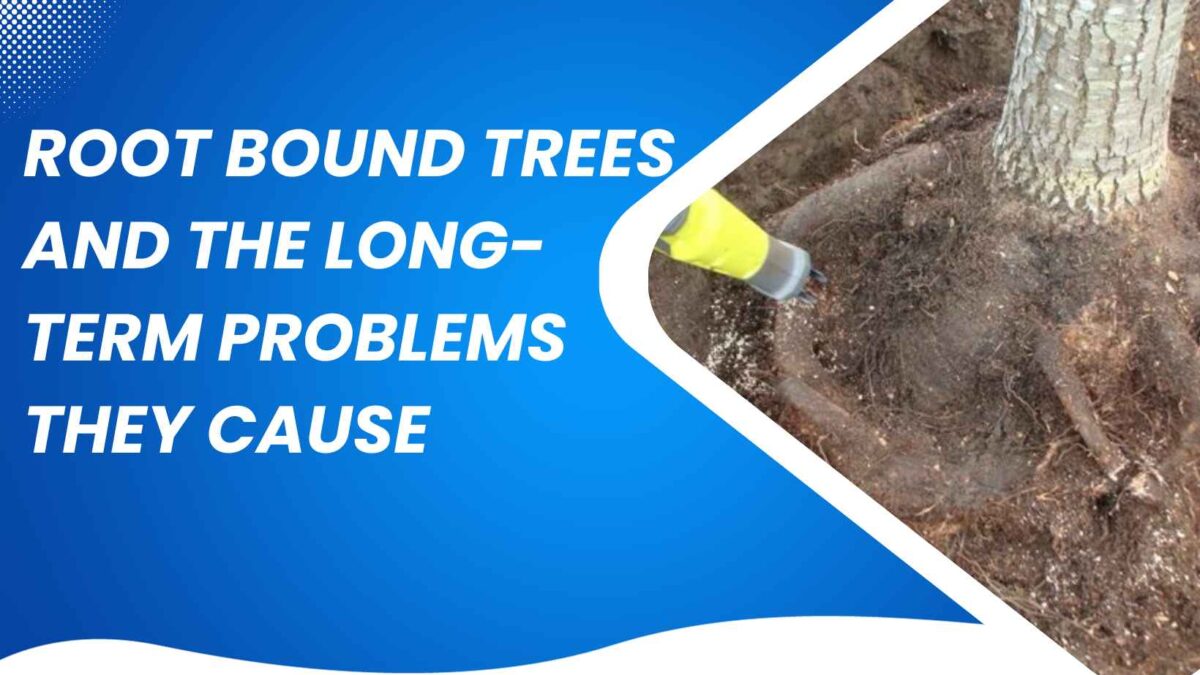
Root Bound Trees and The Long-Term Problems They Cause
Root-bound trees, a commonly ignored concern in landscaping, can lead to long-term problems for your outdoor spaces. From understanding the concept of root-bound trees to exploring actual treatments, we’ll cover the world of root-bound trees and the important issues they can cause in this complete quide.
The Long-Term Issues Caused by Root-Bound Trees
Root-bound trees, or trees with restricted root growth, can have broad effects. Let’s explore the various problems they can cause.
The Struggle for Space
Tree root problems face a constant battle for space. Restricted by the limits of their pots, their roots become stuck, limiting their ability to absorb water and nutrients efficiently. This struggle for freedom can lead to slowed growth, a common issue with root-bound trees.
Increased Nutrient Consuming
One of the most significant issues with root-bound trees is reduced nutrient utilization. As the roots become tightly wound, their ability to access essential nutrients from the soil decreases. This deficiency can result in poor overall tree health, with signs such as fading leaves and reduced life.
Water Stress
Root-bound trees exposed to water stress. Their tightly coiled roots struggle to access water effectively, even when available in
the soil. It can lead to dying, reduced sunlight, and, in severe cases, death of the tree.
Pot-Bound Trees vs. Soil-Bound Trees
It’s important for knowing what’s different between pot-bound and soil-bound trees. Pot-bound trees have outgrown their containers, while soil-bound trees face root issues in open ground. Both types share similar problems, but the solutions may be different.
Compromised Structural Integrity
As root-bound trees grow, their roots can become harmful, compromising the structural reliability of nearby buildings and infrastructure. It can lead to costly repairs and safety concerns.
Impact on Surrounding Plants
Root-bound trees not only struggle personally but can also negatively affect surrounding plants. Their struggle for nutrients and water can interrupt the balance in your garden, leading to lower, less vibrant plants overall.
Difficulty in Transplanting
Transplanting root-bound trees can be challenging. Their stuck root systems make it harder to move them to a new location successfully. In such cases, careful handling and root pruning are essential.
Pest and Disease Exposure
A root-bound tree is more affected by pests and diseases. The stress they endure weakens their natural defenses, making them easy targets for various tree-damaging biological organisms.
The Importance of Regular Inspection
To prevent or address issues related to tree truck roots, regular inspection and maintenance are essential. Observing the health and growth patterns of your trees can help you detect problems early and take perfect action.
Frequently Asked Questions (FAQs)
Look for signs like slow growth, roots circling the pot, or visible roots at the surface. Gently slide the tree from its bank to check the root system.
Yes, with proper care, root-bound trees can often be saved. Transplants, root pruning, and providing perfect growing conditions are some standard solutions.
The best time to transplant is during the tree's still season, typically in long winter or early spring.
Yes, but it's essential to prune the roots and use a larger container to allow for future growth.
Select the right-sized containers, ensure good drainage, and report as necessary to prevent trees from becoming root-bound.
Yes, certain species, like ficus and bamboo, are more prone to root-binding due to their rapid growth.



